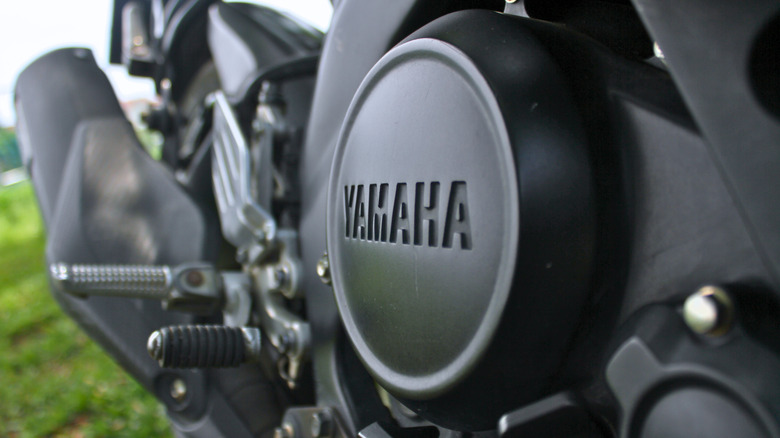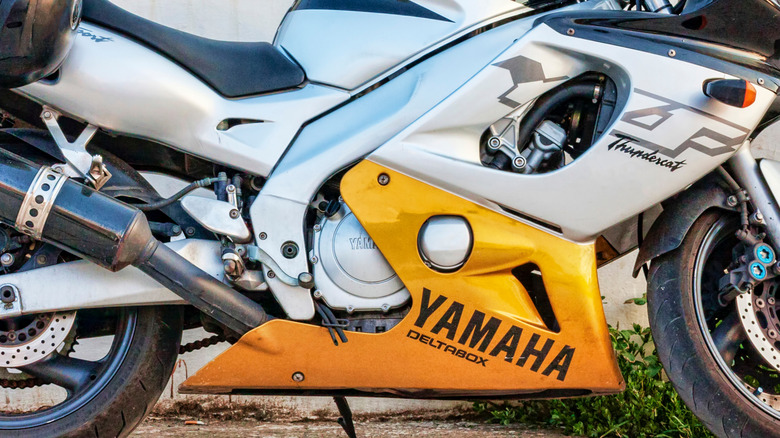What Is The Deltabox Frame On A Yamaha Motorcycle?
It's easy to overlook what's going on underneath a motorcycle's body, but the frame actually plays a huge role in how a bike handles, feels, and performs. Yamaha's Deltabox frame has become a signature feature on many of its sportier rides, including models from its unforgettable R-Series. While it might sound like just another marketing term, there's a reason the Deltabox keeps showing up on the company's motorcycles.
Yamaha's Deltabox gets its name from its unique structure: The frame forms a delta, or triangle shape, while its cross-section resembles a box. This specially designed frame connects the front and rear of the bike with straight, rigid lines that improve strength and control. The distinctive shape helps balance the steering forces at the front with the drive forces at the rear, resulting in more responsive handling. That balance becomes even more critical at higher speeds, where precision and stability make all the difference.
The Deltabox is technically a diamond frame, but there are differences between the two. The Deltabox is a more complex design used on more performance-oriented bikes, while the diamond often features on commuter bikes like the Honda Shine 125 and Honda Unicorn.
Yamaha has refined the Deltabox frame over the years
Yamaha debuted its specially designed Deltabox frame in the YZR500 at the 1982 Grand Prix of Austria in Salzburg. It was the first bike in the 500cc class with a V4 engine boasting a rotary disc valve system, and it is now one of the many Yamaha motorcycles that are worth a small fortune.
After refining the initial design, Yamaha took the Deltabox frame from the race track into production with the TZR250 in 1985. Yamaha later improved the frame in 1998 with the Deltabox II, which was built into the YZF-R1, a model that took sports bikes to the next level. The new Deltabox frame helped the YZF-R1 lead Yamaha sales in Europe, moving 42,000 units over the next two years. The company's frame innovation continued, and in 2002, it introduced the Deltabox III. This new hydro-formed frame had fewer welds overall than previous versions, resulting in a 30% improvement in rigidity.
These technical improvements also opened up new design possibilities. With more control over frame shape and fewer welds to limit them, Yamaha's engineers could start thinking beyond function. The Deltabox wasn't just strong and stable, it could now be styled to match the bike's visual identity and fine-tuned to better suit rider ergonomics.

